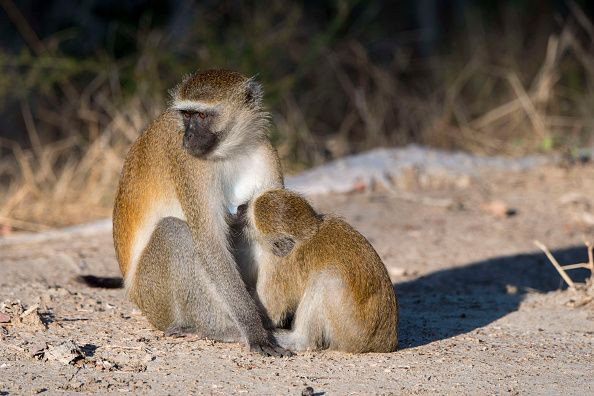Obesity Levels Decided In The Womb? Vervet Monkeys Offer Clues

A new study which examined vervet monkeys, a species native to Africa, suggests how genes, pedigree, and environment work together to influence adult obesity.
Researchers studying a vervet research colony in Wake Forest, University of North Carolina noticed a group of monkeys gaining weight in captivity in 2004. They immediately implemented a high-protein, high-fiber diet to control their weight.
The team slowly noticed a startling trend because of this new diet. In examining 15 years of data on the monkeys’ pedigrees and genes, the team found that monkeys introduced to the diet in the womb showed a much higher rate of obesity. And, this happened to only the male offspring and completely skipped the female.
“What do they mean in terms of evolution, and what does it mean for adult health?” asks Julienne Rutherford, a biological anthropologist at the University of Illinois at Chicago, who was not involved with the research, in a press release on the Boston University website. “Do obese adult men and women get there by different processes? It’s a surprising finding that we’re all still trying to make sense of.”
This showed them that diet of the expecting monkey has a profound effect on the body type of male vervet offspring.
Commenting on the study, Rutherford said "the kind of diet during pregnancy, or the timing of diet during pregnancy, has this outcome in adulthood for the offspring. That is a spectacular finding. It’s also a daunting and very sobering finding. We’re talking about processes that run through generations.”
The extensive study collected data from 906 vervets that lived in the colony between 2000 and 2015. The team also calculated the BMI of these monkeys.
The study published in the International Journal of Obesity showed that 16 percent of the vervets in the colony were overweight at any given time in the 15 years even though they are all fed the same diet.
Comparing the chronically obese monkeys to those that never developed obesity, the team established genetic patterns that might differentiate them.
The infamous Dutch Hunger Winter of 1944–1945 caused an estimated 18,000 to 22,000 deaths. Historic data from this period reveals that pregnant women during the famine sometimes survived on only 400 to 800 calories each day, and the starvation diet took a toll on their children.
Researchers found that women exposed to famine during the second and third trimester of pregnancy had babies with significantly reduced birth weights, and the babies remained small throughout their lives. However, babies whose mothers endured famine during their first trimester had normal birth weights, but grew up to be obese.
This led to the finding that during the first trimester of pregnancy, mothers were essentially programming their babies to prepare for a calorie-poor environment, an idea that became known as the “thrifty phenotype” hypothesis.
“It’s this idea that mothers can program their offspring in order to best take advantage of the caloric environment that the mother is exposed to,” says Christopher Schmitt, an assistant professor of anthropology and biology at Boston University and lead author of the study. “And this may be what’s happening in the case of the vervets.”
Schmitt’s hopes that studying the genetic loci in wild vervets, who do not become obese as often as those in captivity, will help understand how and why these genes evolved in primates.
Ultimately, Schmitt hopes that his work will lead to a better understanding of the genetic underpinnings and environmental triggers of obesity.
© Copyright IBTimes 2025. All rights reserved.




















